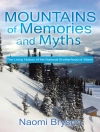Louis Legrand Noble’s ‘After Icebergs with a Painter’ is a poignant and introspective travelogue that blends artistic descriptions with philosophical reflections. Set against the stark beauty of icebergs in the Arctic, Noble’s prose captures the essence of solitude and the struggle for self-discovery. Written in a lyrical and contemplative style, the book explores themes of nature, art, and the human experience, offering readers a thought-provoking journey through the frozen landscapes. Drawing on the tradition of travel literature, Noble’s work stands out for its poetic language and evocative imagery, creating a unique reading experience that resonates long after the last page is turned. Louis Legrand Noble, a seasoned traveler and accomplished writer, brings a wealth of personal experiences to ‘After Icebergs with a Painter’. His deep connection to nature and the arts shines through in his writing, enriching the narrative with insight and passion. Noble’s background in art history and environmental studies enhances the depth of the book, providing readers with a comprehensive perspective on the themes explored. For readers seeking a blend of art, nature, and soul-searching, ‘After Icebergs with a Painter’ is a compelling read that offers a rare glimpse into the intersection of creativity and the natural world. Noble’s eloquent prose and profound observations make this book a must-read for those who appreciate introspective travel writing and lyrical storytelling.
Sobre el autor
Louis Legrand Noble (1813–1882) was an American clergyman, biographer, and author noted for his association with the celebrated landscape painter Thomas Cole. Noble, an eloquent preacher and a passionate lover of nature and art, found in Cole not only a subject for biographical study but also a kindred spirit. His book ‘After Icebergs with a Painter, ‘ published in 1861, offers a riveting account of a voyage he took to the North Atlantic with Cole. The work is a blend of travel narrative, artistic meditation, and environmental observation, which, ahead of its time, anticipates concerns about the fragility of the natural world. Noble’s prose, infused with a poetic sensibility and a preacher’s moral earnestness, reflects the transcendental values of the time and offers insights into the aesthetic principles underpinning Cole’s work. The book remains a valuable resource for understanding the confluence of American landscape painting, literature, and environmental awareness in the 19th century. Noble’s literary style is characterized by its rich descriptiveness, keen observation, and an underlying spiritual fervor that captures the grandeur and sublimity of the scenes he describes alongside Cole’s artistic endeavors. His contributions to American literary and artistic culture, particularly through this engaging travelogue, cement his place as a noteworthy figurehead in the preservation and celebration of the natural landscape through the written word.












